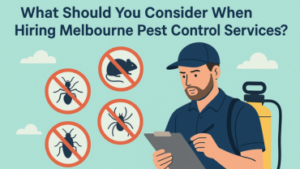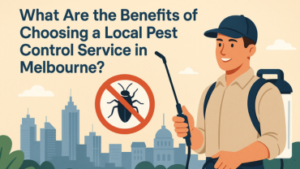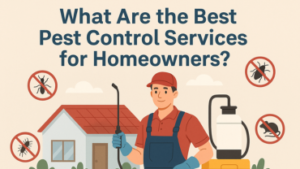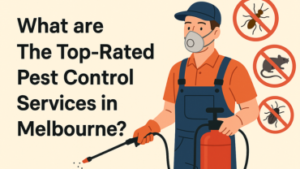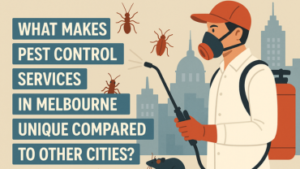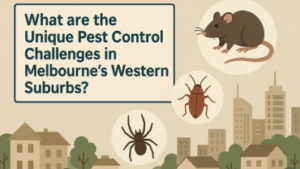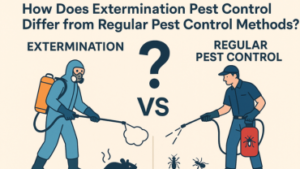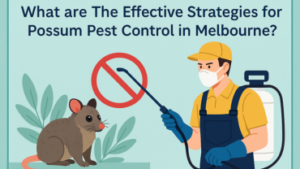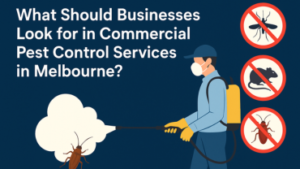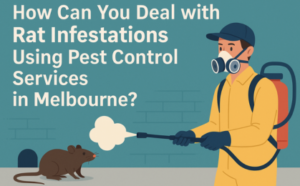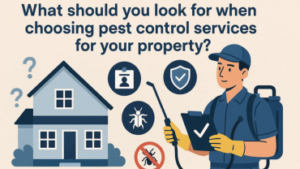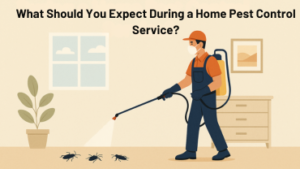That moment when ants invade your kitchen or rodents scratch in your walls, your first thought?
“How much pest control cost will this nightmare set me back?” Here’s the truth: pricing isn’t one-size-fits-all. A few cockroaches? Maybe $150. A full-blown termite invasion? That’s when
how much pest control cost really spikes.
Good news? Understanding what drives prices, pest type, property size, and even your suburb, means you’ll never overpay. Skip the DIY disasters (they always cost more later). We’re breaking it down straight: no jargon, just real talk to save your home and wallet from pests. Keep reading to outsmart infestations for good.
The Biggest Factors That Influence Pest Control Pricing (Explained)
When it comes to
how much pest control cost, there’s no one-size-fits-all answer, and that’s because every pest problem is different. Some treatments are quick and affordable, while others require multiple visits and specialised equipment. Here’s a deep dive into the key factors that shape your final bill, so you know exactly what you’re paying for.
-
The Type of Pest – Not All Critters Are Created Equal
A few stray spiders? That’s a quick fix. A termite colony eating away at your foundations? That’s a whole different (and more expensive) story.
- Common pests (ants, spiders, cockroaches): Usually require basic sprays or baits, keeping costs low.
- Hard-to-eradicate pests (bed bugs, termites, rodents): Need advanced treatments like heat remediation or chemical barriers, driving up the price.
- Preventative vs. reactive services: Stopping pests before they invade is always cheaper than evicting them after they’ve settled in.
-
Property Size – Why Bigger Homes Cost More
Pest control isn’t priced by the hour, it’s priced by the scale of the job. A small apartment might only need a 30-minute treatment, while a sprawling suburban home could take hours.
- Single-story vs. multi-level homes – More rooms and harder-to-reach spaces mean more labour and product.
- Commercial properties – Offices, warehouses, and restaurants require larger-scale treatments, increasing costs.
-
Frequency – One-Time vs. Ongoing Protection
Are you looking for a single treatment or a long-term pest management plan?
- One-off services are cheaper upfront but may not solve recurring problems.
- Regular maintenance plans cost more initially but prevent future infestations (saving you money long-term).
-
Severity – The More Pests, The Higher the Bill
A few ants on your patio? No big deal. An entire nest inside your walls? That’s an emergency.
- Early-stage infestations are easier (and cheaper) to treat.
- Advanced infestations often require multiple visits and stronger chemicals.
-
Treatment Method – From Sprays to Heat Treatments
Not all pest control methods cost the same.
- Standard chemical sprays – Budget-friendly but may need repeat applications.
- Eco-friendly/green treatments – Slightly pricier but safer for families and pets.
- Heat treatments (for bed bugs) – More expensive but highly effective.
-
Location & Accessibility – Hidden Pests Cost More
If your pest problem is in an attic, crawl space, or behind walls, technicians will need extra time (and sometimes special equipment) to reach them, adding to the cost.
-
Guarantees & Follow-Ups – Peace of Mind Comes at a Price
Some companies offer free call-backs if pests return within a certain period. This can be worth the extra cost if you’re dealing with stubborn infestations.
How to Get the Best Pest Control Deal Without Sacrificing Quality
Now that you know what affects pricing, how do you ensure you’re getting the best value? Here’s how to balance cost and effectiveness so you don’t end up with a cheap service that fails, or an overpriced one that doesn’t deliver.
Compare Quotes (But Don’t Just Go for the Cheapest!)
- Get at least three quotes to understand the average how much pest control cost in your area.
- Look for detailed breakdowns, what’s included? Are follow-ups part of the deal?
Check Credentials & Reviews
- A licensed, insured pest controller might cost more, but they’ll do the job right the first time.
- Look for Google reviews or ask for references, real customer experiences matter.
Ask About Custom Plans
- Some companies (like Chris Pest Control) offer tailored solutions, so you’re not paying for unnecessary extras.
- Preventative plans can save you money in the long run by stopping pests before they become a problem.
The DIY Dilemma: When Home Remedies Actually Cost You More
You spot a trail of ants in your kitchen and think,
“I’ll just grab some spray from the supermarket—easy fix!” But here’s the harsh truth: most DIY pest control fails spectacularly, and the consequences often cost far more than hiring a pro upfront.
Why DIY Goes Wrong
- Surface-Level Treatment: Store-bought sprays kill visible pests but miss nests and breeding sites. A single surviving cockroach can repopulate your home in weeks.
- Misdiagnosis: What looks like “just a few spiders” might be a symptom of a bigger insect problem. Without proper inspection, you’re treating the wrong pest.
- Safety Risks: Overusing off-the-shelf chemicals can harm pets, kids, or even damage your property (ever seen bleach ruin a carpet?).
The Real Cost of DIY Failure
That $20 ant spray seems cheap, until the colony moves deeper into your walls, forcing you to call a professional for double the original cost. Worse? Some pests (like termites) cause permanent structural damage while you waste time on DIY fixes.
Bottom Line: Temporary solutions lead to long-term expenses. If pests keep coming back, it’s time to call the experts.
The Hidden Costs of Cheap Pest Control (Why Bargain Hunting Can Backfire)
We get it, when you see a “$99 pest control special,” it’s tempting to jump on it. But
rock-bottom prices often mean rock-bottom service, and here’s how “saving money” today can cost you thousands tomorrow.
What Cheap Services Cut Corners On
- Watered-Down Chemicals: Some companies use diluted sprays that wear off in days, leaving your home unprotected.
- No Inspection: A proper pest control plan starts with a thorough inspection. Cheap operators often skip this, missing hidden infestations.
- Zero Guarantees: Reputable companies offer call-backs if pests return. Budget services? You’re on your own.
The Domino Effect of Cheap Treatments
- Pests Return Faster – Weak treatments = repeat infestations.
- Bigger Infestations Develop – While you save $50 now, you might need a $500 fumigation later.
- Property Damage – Termites or rodents left unchecked can cause costly structural repairs.
Smart Move: Invest in
quality pest control the first time. It’s not just about killing pests—it’s about keeping them gone.
Why Professional Pest Control Is Worth Every Dollar
Sure, you could grab a can of bug spray from the supermarket, but will it actually solve the problem? Here’s why hiring professionals is a smarter investment:
Stronger, targeted treatments – Store-bought sprays only kill surface pests; pros eliminate the source.
Hidden infestations uncovered – Ever had pests return after DIY treatment? Pros find nests and entry points you’d miss.
Long-term prevention – A one-time spray won’t stop pests from coming back, but a professional plan will.
Don’t Wait Until It’s Too Late—Act Now!
Pests don’t take days off, and the longer you wait, the worse (and more expensive) the problem gets. Now that you know what drives
how much pest control costs, why risk guesswork or DIY failures?
At Chris Pest Control, we believe in fair pricing, expert solutions, and real results. Don’t let pests take over your home. Get a free, no-obligation quote today and sleep easy knowing your property is protected the right way.
Call us now or book online-let’s keep your home pest-free for good! 
